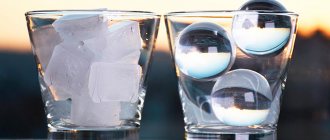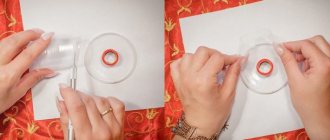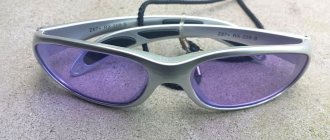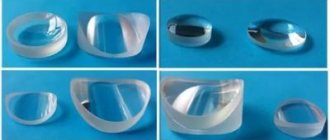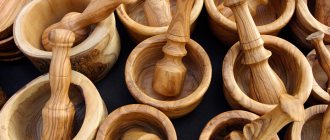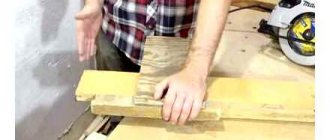Do-it-yourself metal engraving at home - instructions and video
It makes no sense to talk about applying inscriptions on metal using special paints or varnishes.
By the way, this is also one of the methods of engraving on metals. But how long will such drawings, symbols, and icons last on the sample? They will be washed off quite quickly with any of the solvents, although due to banal abrasion their service life will be short. There are more efficient metal engraving technologies, which we will talk about. But are they all suitable for independent performance, and even at home? When you just read about them, everything is clear and easy. But practical implementation is another matter.
Laser engraving
This method is considered the most effective, as it allows you to apply a pattern (drawing) of any complexity to metal, “writing” the finest lines and smallest icons on it.
But taking into account the fact that engraving samples using this method will require expensive equipment, it is acceptable only for those who have decided to make this craft their business, that is, to put production on stream. It is unlikely that anyone will want to shell out a tidy sum just to put memorable inscriptions on a couple of teaspoons or on the blade of a hunting knife. The services of professionals in any workshop will cost less.
Mechanical engraving
The accessories are much simpler here - you only have to purchase a set of required cutters and the engraver itself. A drill is often used for these purposes (anyone who has ever visited a dentist knows what this is). Another option is to apply images using incisors.
The quality of the inscriptions will be high, but only if you have not just knowledge in this area, but also extensive practical experience. This work requires a “sharp eye” and a steady hand. How many of us can boast of our skills? It turns out that quite a lot of time will pass from what was conceived to actually executed, which is necessary to acquire skills. Who is happy with this prospect? In addition, you also need to be able to sharpen cutters (stiches) correctly if the work is carried out with their help.
Let's consider the technique of electro/chemical etching for the purpose of applying inscriptions. It belongs to the simplest category, and anyone who has chromed metal parts at home will get the gist of it right away.
Main types of metal engraving
Metal engraving, as a separate direction in metalworking, appeared several hundred years ago. Metal products were decorated with beautiful carvings and recesses. Their price increased depending on the metal used and the complexity of the decorative processing.
Initially, drawings on metal were made by hand. The manual processing method is still known. However, with the development of technology and equipment, new ways of applying patterns to metal parts and workpieces have emerged.
Color engraving
Metal engraving can be done using different colors. For this, a special glass-graph is used. When the drawing is completed, the master applies a layer of colorless varnish to the treated surface. It increases the durability of the design.
Color engraving on metal is best done with oil-based paints. Before applying them, you need to clean the surface with sandpaper. To achieve the blackening effect, it is not necessary to use industrial equipment. To do this, you can prepare a coloring composition:
- In a metal container, mix one part potassium carbonate and two parts sulfur.
- Place the mixture on low heat and stir constantly.
- When the mixture turns black, turn off the fire. Pour the cooled mixture into a mortar and grind with a pestle.
To perform the blackening procedure, you need to mix the resulting composition with water. Proportions are calculated based on 9 parts water to 1 part substance. Pour the resulting solution into a deep container. Immerse the product for blackening into it. Heat the container over low heat until the product acquires the desired shade.
Laser engraving
Laser metal engraving is a popular way of applying a design. The equipment used consists of a working part, which is fixed on guide axes. Its design is a set of focusing lenses through which a laser beam passes. When properly focused, the beam is so powerful that it can not only remove part of the material, but also cut metal sheets.
Fiber laser systems are used to work with metal. To apply designs to non-metallic surfaces, CO2-based laser equipment is used. Laser systems have small advantages:
- Laser work is carried out with high precision.
- The finished drawings look neat.
- High speed of work. Productivity increases.
- Drawings made using a laser last for many decades and do not wear out over time.
- The latest laser equipment is equipped with CNC systems, which simplifies working with them.
Such machines are used for decorative processing of products made from various materials.
Laser engraving
Mechanical engraving
Mechanical engraving on metal involves the use of industrial equipment. A sharp cutter is fixed to the working part. There are two types of mechanical equipment on sale:
- Manual machines (pantographs).
- Computerized machines.
Hand-held equipment is used to design jewelry and heirlooms. However, computerized machines are beginning to replace manual machines. Mechanical engraving refers to the method of applying designs to metal using diamond-coated cutters. The main disadvantage of mechanical engraving is its low speed and productivity.
Sandblasting
This method is often used when engraving on metal at home. The parts are processed using abrasive material. The principle of sandblasting is that abrasive particles fly out of a feed nozzle at high speed and hit a metal surface. At the same time, its matting occurs.
Sandblasting machines are used to perform decorative processing of glass or natural stone. At the same time, the equipment is used when working with metal surfaces, brick, granite, plastic, and ceramics.
Laser sublimation method
The technology involves making metal engravings using a color printer. Drawing process:
- Select an image and print it using a color printer.
- Place the image on the item being processed. Under the influence of high temperature, the paint is transferred to the surface being treated.
Laser sublimation is used to work with various materials. Most often, examples of this technology can be seen on mugs, plates, T-shirts and other things.
Steel engraving technology
Engraving involves various processes, equipment and tools. They can be divided into two types - mechanical (machines) and manual (hand and power tools) engraving. Mechanical is divided into two more subgroups:
- Defense - This method is used to create large designs.
- Hatching is a method of processing the surface of a product. Initially, the contour is applied, and then the metal layer is removed.
Engraving method 1
- Glass container (according to the size of the workpiece being processed). Naturally, not a bottle with a narrow neck, but a jar, glass or bath. Constant voltage source (up to 15 V). It should provide a current of 0.5 A, at a minimum. The best option is a battery charger for a personal car. This is exactly what the author used. Although some craftsmen use battery chargers for household tools (screwdrivers, etc.) and even cell phones for these purposes. A couple of wires for connection and clamps (for example, alligator clips). Any metal workpiece (the same spoon) that will play the role of a second electrode. Saline solution. The concentration is determined by eye, so the general recommendation is as follows: per glass of water – 2 teaspoons. Varnish. You will need it to paint the segment of metal on which you plan to engrave. Most articles devoted to the electro/chemical method contain tips on using the nail composition. The author, in order not to “injure” his wife with such extravagance, used the so-called tsapon-varnish, which is well known to radio amateurs and electrical installers. It costs a penny, is not in short supply, and can be easily removed with a solvent.
How engraving developed in Russia
An entire street of new houses was built for German settlers. Each was given a large salary and a job at the factory. Literally a couple of years later, the Germans began to have Russian students who adopted the knowledge and secrets of engraving.
The method of gilding through fire was also studied. The students already had basic skills and were fairly competent workers. And literally in a matter of months, they began to independently implement their skills.
One of these students, Ivan Bushuev, decided to try a self-developed technique for engraving. It was radically different from the teachings of the Germans. And over time they began to call it Zlatoust. Ivan Nikolaevich can be considered the father of the Russian school of engraving.
Already in 1823, the Germans recognized this method as the best and asked to fire them from the factory. Because the new technology surpassed their skills. So in 5 years, the Russian blacksmith was able to extract the maximum of his skills and invent his own method of engraving.
Modern products of the Zlatoust factory.
Engraving technology
Electrolyte is being prepared
Water is poured into the container, salt is added in the required amount (depending on the volume) and thoroughly mixed until completely dissolved. The quality of the engraving largely depends on this.
A part (product, sample) is being prepared for applying something
The dimensions of the inscription or design are known, so it is not difficult to determine the area of metal varnish coverage. After the layer “sets” a little, the required contour is drawn. What - a needle, a thin awl, a toothpick, a sharpened match and the like - is up to you, dear reader. Whatever it is more convenient to do the work with your own hands, do it. The task is to “expose” the base metal along the lines of the pattern to ensure its direct contact with the electrolyte.
You can do it differently. Wait until the varnish is completely dry, and only then “scratch” the lines. But these are already details, and it’s easy to decide on your own what’s best.
Next, the electrodes are placed in the solution
One is designated - any metal blank. It is connected by a wire to the “–” of the current source. The second is the sample on which the engraving is applied (to its “+”). The technology is similar to chrome plating of metal.
Supply voltage
The time of the technological operation is determined visually. If the etching depth suits the master, then you can turn off the charger. Typically, engraving using this method requires no more than 5 minutes.
All that remains is to remove the metal product from the bath, remove the varnish, rinse the sample well under running water and wipe dry. That's it, the engraving is done!
The drawing and inscription can also be made convex.
To do this, you need to apply varnish to previously drawn (felt-tip pen, pencil) lines (stripes). And all the rest, “uncoated” metal will be etched.
Why use engraving
Engraving on an industrial scale was gaining momentum. Today, many manufacturers brand their work.
Hand engraving with various drawings and images is, frankly speaking, in decline today.
Few people do it, but if it is on a product, its value immediately increases. These are mainly exclusive works in isolated cases. The engraving on the blade gives it uniqueness and originality. Hand engraving is not an easy task.
Modern types of engraving can be found in almost any souvenir shop today. A very common method of application is laser. But you won't find manual work. A true engraver today is worth his weight in gold.
Engraving on blades.
Features of the method
Preparing a drawing (lettering)
Everything you need can be easily found on the Internet and copied. For those who know computer graphics, this is not a problem at all. The main thing is to have a printer at hand for printing.
- You will have to do a mirror image conversion. For this technology, only a laser printer can be used. Any other type of device is not suitable. You will need not ordinary paper, but thin glossy paper. As an option - self-adhesive film. In this case, you need to refill so that the print falls on the substrate. You can also attach it to standard (office) paper with pieces of this film. The printer “brightness” mode is set to maximum.
After printing, the image is carefully cut out.
Attention! Work should be carried out with gloves to prevent contact of fingers with the pattern.
Metal preparation
It is cleaned of foreign fractions and degreased.
Fixing the stencil on metal
To prevent it from slipping in the future, it is advisable to secure it (at the edges) with adhesive tape.
Heat treatment
It involves ironing the stencil with an iron. The difficulty is that both the heating time and temperature will have to be selected experimentally. The general recommendation is no more than 2 minutes at maximum heating of the iron.
Cooling
After the metal temperature drops to room temperature, the stencil is removed.
Next is metal etching. One variant of this technology is described above.
It only remains to add that there are quite a lot of DIY engraving techniques - both with the help of solutions and without them. After all, the conversation was about metals, without indicating which ones specifically - steel, brass or something else. The above methods are some of the most common and accessible for DIY implementation. Typically, they are used for engraving steel products. Anyone who wants to master literally all technologies practiced at home will easily find the relevant information.
Good luck with your DIY engraving!
Currently reading:
We make an inscription on the metal. Chemical engraving
Many people are very interested in how to make a beautiful inscription on metal at home on their own. After all, it looks very beautiful and impressive if you decide to give your friends or loved ones a valuable personalized gift with wishes that will never be erased or fade in the sun. The inscription will always remind a person of you, making you remember the most wonderful moments spent together.
Let's watch the video and then move on to the process:
We will need:
– photo varnish for printed circuit boards Positiv 20; – product for engraving; – glass; – alkali NaOH; – acid or ferric chloride; ultraviolet lamp; – a bone for etching; – a container for solutions; – acetone, for removing varnish after etching.
A stencil for engraving is prepared in advance.
The stencil can be made using Adobe Photoshop. Just don’t forget that after making the desired text or drawing in Photoshop, it must be mirrored horizontally so that the text can be read properly on the product. You can also use QuarkXPress, but also be sure to mirror the image you created.
It is best to print a stencil on a laser printer. Just plain paper will not work for this; you need to use a special film. If the toner is not dark enough, then you can take two identical stencils and carefully glue them together.
Engraving is done using photo varnish for printed circuit boards. You can purchase it at almost any radio market.
The principle of operation is as follows.
A thin layer of photo varnish is applied to the product to be engraved, which must first be shaken. Don't forget to put newspaper on your work table to avoid getting it dirty. After application, allow some time for it to dry thoroughly.
Then a stencil with the desired text or engraving design is applied to the product. Turn off the bright lights first, otherwise flare will occur. Then it is pressed with glass or a thin film, which can also be fixed to the metal using small magnets; they should not overlap the inscription.
The assembled structure is illuminated with an ultraviolet lamp. Don't forget to wear special safety glasses to avoid harm to your eyes. The exposure time should be 5 – 10 minutes.
The stencils are removed and the metal is washed with a NaOH alkali solution of the correct concentration or a sewer cleaner, observing safety precautions.
The exposed varnish is washed off to the metal, after which you can begin etching using acid or ferric chloride, depending on the metal from which the product is made.
Metallization of printed circuit board holes at home - step-by-step instructions
yes, perhaps I drilled 2 through holes in the workpiece for the scissors
Of course, this is possible, but it’s not difficult to determine the time; check the workpiece from time to time, and stop etching when the desired depth is reached.
In the second picture with a description of mechanical engraving, the engraving was made not with a drill with cutters, but with a stichel, this must be learned, learned and learned again. And with a drill you can only scribble, although most basement “Jewelers” do just that. A little advice for beginners: there is no need to etch at great depth; it will create uneven edges and your varnish may not hold up in places; as a result, you will end up with an uneven pattern and a bunch of small dots where you don’t need them. If you need to make exactly 0.2 mm deep or more, it is better to use milling (if possible). If you decide to start with a drill, then immediately throw away the entire set of burs that came with it: 1 - they are all crooked, the runout will not allow you to draw lines normally, 2 - they are all thick, there can be no talk of any small inscription. Therefore, you have a direct route to the jewelry store for carbide burs, they cost around 50 - 100 rubles. per piece you need to take the smallest 2 spherical pieces and a pair of a slightly larger 1.mm size.
Maybe not to jewelry stores. Carbide burs of excellent diameters are also available in dental stores. It's cheaper there.
Source
The essence of the method
The technology is to protect areas that should remain intact from exposure to the chemical. The protective coating can be applied in different ways - we will describe them in detail below. After this, the acid must act. An iron part is immersed in an electrolyte solution and subjected to a reaction. The longer it is, the thicker the layer will be removed from the surface. An interesting result is shown by multilayer etching, when immersion is carried out in several stages.
Modern Engraving Techniques
With the advent of modern equipment, engraving has become quite commonplace. And it does not require a lot of time for training and for the work itself. Using these methods, you can apply a photo, company name, name, or congratulatory text, or even a photograph, to almost any surface. There are 4 main types of application methods:
- Mechanical pantograph machine.
Mechanical. This method differs in that a special machine equipped with various cutters directly, under human control, applies a given image to the blade.In fact, this is a CNC machine. Two types of cutters are used: diamond for harder steel, and simple hardened for stainless steel. Another option for mechanical processing is working with a pantograph.
This is a special mechanism that does not operate on software, but directly by the human hand. But for such work, you need to know well the properties and characteristics of different metals, so as not to spoil the knife blade.
- Sandblasting .
In general, a sandblasting machine is a special machine that, thanks to air pressure, has the ability to throw out small particles of abrasive materials with pinpoint precision. Sandblasting machine. Thanks to this approach, the work looks three-dimensional. First, a sketch is made on a hard surface and placed on the engraving site. Then fine sand is supplied under pressure and, “biting” into the metal, the sand leaves a mark. The depth of the pattern depends on the size of the abrasive mixtures. This method is used both on metal and on the handle of the product. - Application laser engraving, is considered one of the budget options. The use of infrared rays affects carbon dioxide molecules, evaporating metal particles.
An example of laser engraving.
To work with harder grades of steel, yttrium-aluminum radiation is used. Another type of radiation is fiber, which is considered the most powerful. Essentially, the principle is that the laser beam evaporates particles of material and thus leaves a mark. - The result of galvanic etching.
Artistic electrochemical etching. The method is that the desired element is immersed in a galvanic bath with a special etching solution. The metal is covered with a special film with a pattern, and during a chemical process, it peels off and the desired image remains.To obtain greater depth, the master periodically removes objects from the bath and glues those areas that are already ready. The second name of the method is galvanic.
Modern equipment, unfortunately, has turned the former art into an everyday activity. But there is no need to be sad.
All modern methods will never be able to surpass manual work. And let’s hope that the business of the “experienced” will not fade away.
Subjects of images and inscriptions
Today, thanks to the widespread use of modern engraving methods, it is most often ordered as an addition to a gift. They ask to place congratulatory texts, memorable dates and words, and even photographs on blades and various other materials. It happens that poetic lines are ordered on both sides of the blade. Engraving is also done on the handle.
Examples of drawings for engraving.
Where they depict artistic calico or order images of various predatory animals. A fairly common occurrence is an image of the logo of the company to which the gift will be presented. In principle, the list of drawings, pictures and texts is unlimited. The main thing here is imagination; if you have an idea, they will help you develop it in an engraving salon.
Methods used
Despite the fact that the essence of the technique is the same - it is the removal of the top metal layer by exposure to an aggressive substance in pre-prepared, ideal conditions for this, the technology can be divided by type. The classification will be based not on how to etch a design on metal, but on what etching solution to prepare. Depending on the material, there are different methods:
Chemical. It is also called liquid because liquids are used - acids. Despite the fact that the result is quite fast and of high quality, and there is no need to purchase specific or expensive equipment, not everyone uses this method, since during etching, caustic fumes are formed that are harmful to health. It is very important to adhere to safety precautions and ensure protection of the upper respiratory tract.
How to etch a design on metal at home using the galvanic method
Let's consider this process as the most popular, giving an excellent result, and also not very expensive and accessible at home.
The first pleasant difference from the chemical method is that there are no harmful fumes. The electrolyte solution depends primarily on the etched material: The chemical elements used
Ammonia, ferrous sulfate
Copper alloys (pure copper, bronze, brass)
In order to apply a pattern to metal with your own hands, you will need to prepare the following materials and equipment:
A non-conducting capacitance that matches or slightly exceeds the dimensions of the workpiece.
5 volt electricity source.
Cathode - it must be made of the same steel as the workpiece.
Wire hangers on which the metal element will need to be suspended.
There are two conductor rods that exceed the size of the bathtub.
Now we present the algorithm of actions:
We connect the first rod to a source of electricity (negative charge), attach the cathode.
The second, respectively, to the positive terminal, and it will also serve as a support on which the product (anode) will be suspended.
Then voltage is applied. When it turns on, electrolytic transfer occurs. However, only from those surfaces that were not covered with any protective coating.
Artistic metal etching at home
The technique used to decorate metal products can be any of the ones presented above.
It is usually popular for applying patterns on bladed weapons, firearms, kitchen utensils, steel parts of cars and any other steel objects. Most often, hunting scenes, abstractions, and animal silhouettes are used as stencils. Sometimes the etching process is combined with a number of other methods of decorating metal surfaces, for example, bluing. Then the drawing receives an additional yellowish tint. Let's watch a video about etching metal at home:
Typically used for these purposes:
A hot needle is taken for the pasted surface. It scratches the contours of the image or engraving. This way the material is cut through. Take tweezers, use them to carefully lift and remove sections of adhesive tape from those fragments where etching is supposed to be done. And other parts remain protected. To then remove the adhesive layer, you can use a regular solvent. Do not forget about mandatory degreasing before starting the process.
Surface preparation before applying a design to metal for etching
Why clean and degrease? In order to speed up the entire procedure, as well as for an improved result, removal occurs in an even, uniform layer. The first step is to remove any contaminants - these are both mechanical (ordinary dirt) and chemical (oil, for example) elements. For this purpose, you can use a soap solution, classic dishwashing detergent, or powder. Next, let the parts dry under normal climatic conditions. It is better not to rub with those rags that can leave lint, but to soak it, for example, with paper napkins.
The next step is to remove the greasy, oily layer; a degreaser or regular gasoline, solvent, acetone, or alcohol can help with this.
You can use not only chemical cleaning methods, but also mechanical ones - combining them. To do this, you can use polishing and grinding. If polishing compounds and sponges are not available to the master, and only sandpaper is available, then it is important to sand strictly in one direction so that the marks are parallel and not chaotic. This will improve the overall appearance of the finished product.
Drawing a pattern on metal for etching: how to make a pattern
The general principle is the same: you need to protect one part from the corrosive effects of the etching composition. You can only act using different materials. Below we give examples of such substances.
Nail polish
The availability of this method is very high - the cosmetic product can be purchased at any relevant store. But users note that there are several negative aspects:
Since the liquid is quite viscous, it cannot be applied to very small parts or thin strokes.
Not every person without experience will be able to draw a pattern with a brush without a stencil. Must have some drawing skills as well as a steady hand.
If a mistake was made, it is quite difficult to carefully erase the wrong area of varnish; it will smudge.
Etching a design on stainless steel with a primer or bitumen
The method is quite painstaking. First, the entire surface to be treated is covered with liquid material. After it dries, take a pen or felt-tip pen, pencil, and transfer the pattern with it. Then you need to take a needle, thin wire or other pointed metal element. With its help, you need to scratch all the details of the design that are not etched. At the same time, pay attention to ensure that there are no chips. Primers of types GF 021, XB 062, as well as the most common bitumen varnish are suitable for application. Typically, the technique is used when it is necessary to apply thin lines, as well as images that are highly complex.
How to etch inscriptions on metal objects, home method
Do you want to mark yourself with a cutlery set or write your name on your favorite thermal cup? Contrary to appearances, it is quite simple, although it does require caution. You should write "don't try this at home" but that's the point of this guide after all, so be careful.
Using this 40 liter cauldron as an example, we will show how easy it is for you to digest your home methods regardless of your heart.
To make the inscription you need something acidic, vinegar is easiest, and something to create an electrolyte, such as kitchen salt. We create a mixture of 1/4 cup vinegar with 1/4 tablespoon salt. This amount should be enough.
The positive terminal of the 9-volt battery is then attached directly to the metal container.
Negative pole to the ear plug, but in such a way that it has good contact with the cotton at its end.
ATTENTION! Polarity is very important!
The choice of templates is of course free, here we use templates with numbers.
After these preparations, wet the tip of the swab in the solution, making sure that the entire swab and the tip of the tube are wet. When the swab touches the cauldron, you hear a hissing sound or bubbles - this means there is a reaction. A few seconds are enough to get good and not too deep digestion. Of course, before jumping into deep water, it's best to check it for the same material as our target object, but which won't be damaged if you fail.
And this is what the boiler looks like, calibrated in gallons.
Pickling of non-ferrous metals
There are several different metal alloys and individual substances on the periodic table, so numerous are the mordants used. Their effectiveness is often determined by the atomic weight of the element.
The most commonly used non-ferrous metals are copper, brass and bronze. Such acids as hydrochloric, phosphoric and nitric react equally well with them. Chromium compounds in the composition help accelerate the reaction.
One of the few elements that reacts not to an acidic, but to an alkaline environment is aluminum and, accordingly, aluminum alloys. In addition to it, you can call molybdenum. For them, mix caustic soda and add hydrogen peroxide.
It is very difficult to process titanium; it must be prepared in two baths - first with an alkaline solution, and then with strong acids, such as sulfuric and nitric in high concentrations. Thus, oxides are first removed, and then galvanization is carried out.
If you need to etch rarer metals, such as nickel or tungsten, you should mix hydrogen peroxide with HCOOH.
Creation of printed circuit boards
A thin sheet of textolite is used as a blank, which is coated on both sides with a layer of copper. The specialist’s task is to make conductive paths in exact accordance with the drawing. This is quite delicate work. You need to attach some protective material to the lines (usually varnish), and remove the remaining copper foil using tweezers. The following materials are used for etching:
Composition of sulfuric acid, hydrogen peroxide and water.
Copper sulfate with sodium chloride.
This is the case if the liquid method is used. After this, all chemical residues must be thoroughly removed. The electrolytic option is also suitable.
How does the process work for other materials?
Glass is often decorated this way, for example, kitchen utensils, windows, mirrors. The only substance that easily and fairly safely dissolves glass is hydrofluoric acid. Wax and rosin are suitable as a protective coating. Otherwise, all the steps are the same - surface preparation, protecting areas, applying liquid chemicals, removing residues.
Old School Engraving Techniques
Today it is very rare to find good hand engraving on a blade. Such a product can be considered an item of artistic value. But it should be borne in mind that the very principle of engraving violates the integrity of the product.
For this reason, after the process, the blade can be hardened. Thus, gold and silver inclusions take on an improved appearance. Printing ink is often used, which allows the engraving to obtain rich shades and shadows.
Do you have an engraved blade?
Of course! Not yet...
Incisive engraving
The historical name of the engraving method is bulino. This was the name of the main cutter in the Italian school of engravers. Today there are many more tools used for the job, but the principle remains the same.
Using a chisel, the master cuts into the surface of the blade, conveying the texture of the image of the object and the play of light and shadow. In this case, the cutters work with different pressure forces and at different angles.
Sometimes a thinner object is preferable for drawing a picture.
A thin needle allows you to more accurately convey the image and small details. In the old days, this method was used to decorate hunters' guns. And only then they began to apply patterns on the blades. All metal elements of the knife can be decorated with carvings.
Also, the craftsmen do not lose sight of the scabbard. There are three types of drawing techniques: dotted, linear and mixed. But each master decides for himself which type is best to use, and in most cases they are used all together.
Chisel engraving on knives.
Planar engraving
If you have come across old hunting knives, you have probably noticed how often floral patterns are used in engraving. Previously, each plant had its own sacred meaning. The lotus symbolized immortality, the oak symbolized power, the laurel symbolized glory, the vine symbolized sacrament and communion.
These plants were most often used in flat engraving. There was no need to create a special invoice. If grooves were cut out in incisive engraving, in long lines or dotted lines, then in this case two or more planes are created.
For this purpose we used different gravers to achieve the correct shadow effect. If you apply an inscription, it will seem to protrude from the surrounding surface or, conversely, it will appear in a recess. This technique is more often used for carving sheaths.
Planar engraving on the blade.
Plate engraving (chasing)
Embossing can be called modeling a rough shape or bringing a workpiece to the desired shape. For this purpose, hammer cutters are used - bolshtikhel, flakhshtikhel and spitzshtikhel. Today this method is almost completely replaced by figure casting. Exceptions are designer knives from Transcaucasia.
Plate engraving on knives.
A little about old school engraving
I would like to voice a few small facts about engraving using old methods:
Blade integrity
Engraving in any form violates the integrity of the blade. If corrosion protection has been applied, it must be restored.
Hardening
Most products are re-hardened after the engraving process. This will make the blade hard and protect the steel from corrosion.
Gold and silver
If gold or silver incisions were applied to the blade, then after hardening they look even more beautiful.
Additional coverage
After engraving and hardening, the product is often coated with printing ink; it can enhance the contrast of light and shade.
Artistic value
Most of the blades with artistic engraving, which is created by the Guild of Gunsmiths, are considered cultural values.
More engraving options.

